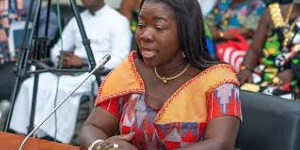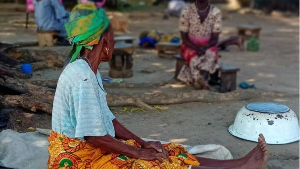Kintampo Rural Bank Limited in the Brong Ahafo Region has consolidated its position as a leading force in the industry with healthy balanced growth across all parameters during the 2015 year under review.
In a very challenging economic environment, marked by higher inflation, tighter monetary policy, and escalation in utility charges with corresponding volatile banking climate due to the activities of Ponzi schemes that affected the profitability of many banks, Kintampo however prevailed. It posted a net profit of GHC1.25million as against GHC1.01million in 2014, indicating an increase of 23.76%.
The total deposits grew from GHC11.64million to GHC14.23million, registering a growth of 22.25% over the previous year.
The capital and reserves improved from GHC2.65million to GHC3.60million owing to ploughing back of profits during the period under review.
In the heat of mushroom and subsequent collapse of quasi financial institutions, small businesses in the bank’s catchment area grounded to a halt, thus adversely affecting demand for loans.
The situation therefore accounted for the slight decrease in gross advances of the bank from GHC8.30million to GHC8.11million, representing a marginal reduction of 2.29%.
The value of the total assets of the bank appreciated from GHC18.05million in 2014 to a little over GHC22.13million in 2015. On the other hand, the capital adequacy ratio of the bank under Basel III norms is now as high as 39.42% which is significantly above the Bank of Ghana mandated level of 10%.
In a report read for him at the 31st annual general meeting of shareholders at Kintampo last Saturday, Dr. Samuel Donyina-Ameyaw, Chairman of Board of Directors said the bank could have performed far better had it not been the turbulent economic situation which almost submerged the industry.
To buttress his claims, he recounted series of indicators that affected operations. Provisional estimates for the period under review showed GDP growth rate of 4.1%; growth was moderate due to a slowdown in industry and services sectors. Growth in the industrial sector was 9.1%, services sector grew marginally by 4.7% while the agricultural sector shrinked by -0.04%.
The poor macroeconomic environment he however noted, did not affect the bank’s lending commitment to agriculture as well as small and medium scale enterprises (SMEs). The bank advanced an amount of GHC1.18million to the agric sector while GHC1.37million was channelled to SMEs. It also advanced GHC1.03million to 228 micro finance groups as GHC1.83million went to susu customers as loan.
The stated capital of the bank currently stands at GHC851,350 which is an increase over the previous year’s figure of GHC725,039. Meanwhile, the Board of Director have recommended a total dividend of GHC250,119; that is GHC0.0025 per equity share.
Dr. Donyina-Ameyawhas therefore expressed operational optimism for the years ahead as it would not compromise with growth with quality.
The bank’s long standing commitment for financial soundness, long term customer relationships and proactive management are as important more than ever. The bank would protect and further improve the current levels of its key financials such as asset quality, earnings per share and net interest margin, he stated.
Business News of Saturday, 3 September 2016
Source: B&FT













